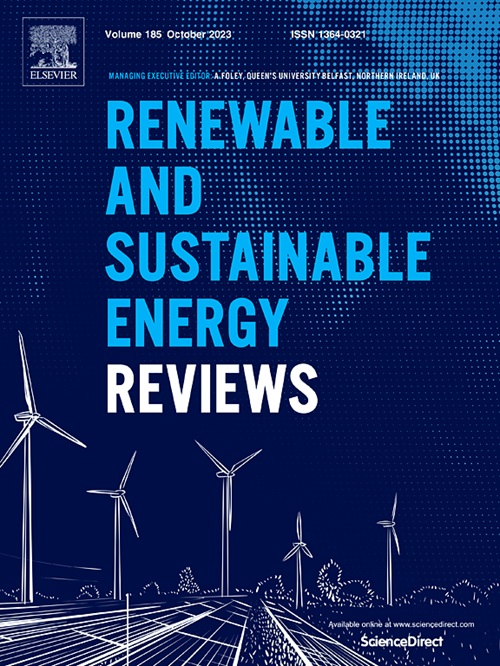Structural performance of direct foundations of onshore wind turbine towers considering SSI: A literature review
IF 16.3
1区 工程技术
Q1 ENERGY & FUELS
引用次数: 0
Abstract
The exponential increase in the construction of energy generation systems using wind turbines has driven the need for taller towers in search of stronger winds, resulting in challenges for the development of structural solutions. This paper presents a comprehensive literature review on advancements in the modeling and design of direct foundations for wind turbine towers, emphasizing the importance of soil–structure interaction (SSI). The review covers three-dimensional models developed to analyze the impact of SSI, as well as the optimization of designs considering deflections and structural requirements. The main goal of the paper is to provide detailed insights to serve as a starting point for further research on direct foundations for wind turbine towers. Structural model analysis and the use of methods such as Finite Element Analysis (FEA) have revealed significant variations in the effectiveness of foundations, depending on geometry and soil characteristics. The results highlight the importance of considering SSI for an accurate representation of the overall structural response. In the design and enhancement of wind structures, critical factors such as displacements and stresses must be considered when evaluating the interactions between the structure and the soil. Integrating these design considerations into the improvement of foundations is essential to ensure the safety and efficiency of these structures, meeting the growing demands of the industry and promoting sustainability in wind energy generation. Thus, this research makes a significant contribution to the understanding and advancement of engineering practices for wind turbine tower foundations, establishing an important starting point for future investigations.
考虑SSI的陆上风力发电塔直接基础结构性能:文献综述
使用风力涡轮机的能源发电系统的建设呈指数级增长,推动了对更高塔的需求,以寻求更强的风,这给结构解决方案的发展带来了挑战。本文对风力发电塔直接基础的建模和设计进展进行了全面的文献综述,强调了土-结构相互作用(SSI)的重要性。这篇综述涵盖了用于分析SSI影响的三维模型,以及考虑挠度和结构要求的设计优化。本文的主要目的是提供详细的见解,作为进一步研究风力涡轮机塔的直接基础的起点。结构模型分析和有限元分析(FEA)等方法的使用揭示了基础有效性的显着变化,这取决于几何形状和土壤特征。结果强调了考虑SSI对于准确表示整体结构响应的重要性。在风力结构的设计和加固中,在评估结构与土壤之间的相互作用时,必须考虑位移和应力等关键因素。将这些设计考虑因素整合到基础改进中,对于确保这些结构的安全性和效率,满足行业日益增长的需求并促进风能发电的可持续性至关重要。因此,本研究对了解和推进风电机组塔架基础的工程实践有重要贡献,为今后的研究奠定了重要的起点。
本文章由计算机程序翻译,如有差异,请以英文原文为准。
求助全文
约1分钟内获得全文
求助全文
来源期刊

Renewable and Sustainable Energy Reviews
工程技术-能源与燃料
CiteScore
31.20
自引率
5.70%
发文量
1055
审稿时长
62 days
期刊介绍:
The mission of Renewable and Sustainable Energy Reviews is to disseminate the most compelling and pertinent critical insights in renewable and sustainable energy, fostering collaboration among the research community, private sector, and policy and decision makers. The journal aims to exchange challenges, solutions, innovative concepts, and technologies, contributing to sustainable development, the transition to a low-carbon future, and the attainment of emissions targets outlined by the United Nations Framework Convention on Climate Change.
Renewable and Sustainable Energy Reviews publishes a diverse range of content, including review papers, original research, case studies, and analyses of new technologies, all featuring a substantial review component such as critique, comparison, or analysis. Introducing a distinctive paper type, Expert Insights, the journal presents commissioned mini-reviews authored by field leaders, addressing topics of significant interest. Case studies undergo consideration only if they showcase the work's applicability to other regions or contribute valuable insights to the broader field of renewable and sustainable energy. Notably, a bibliographic or literature review lacking critical analysis is deemed unsuitable for publication.
 求助内容:
求助内容: 应助结果提醒方式:
应助结果提醒方式:


